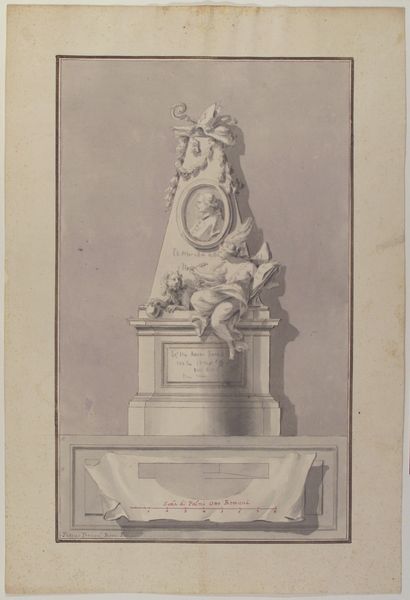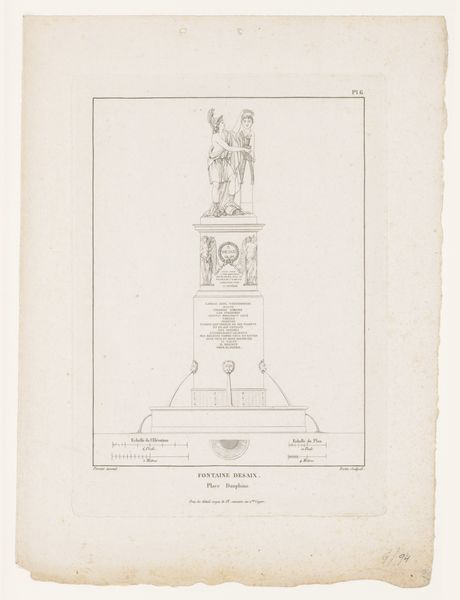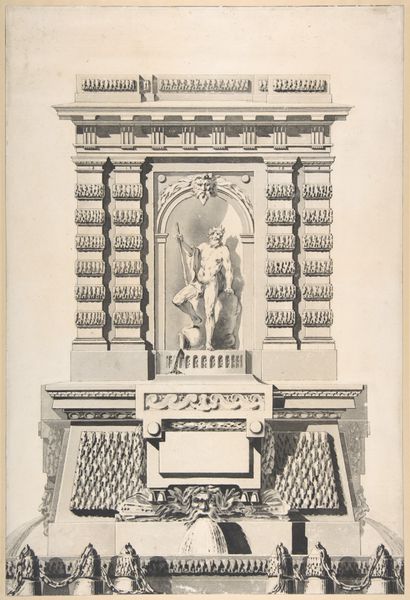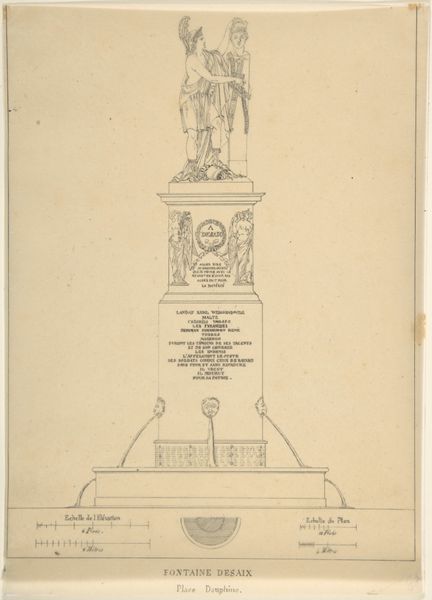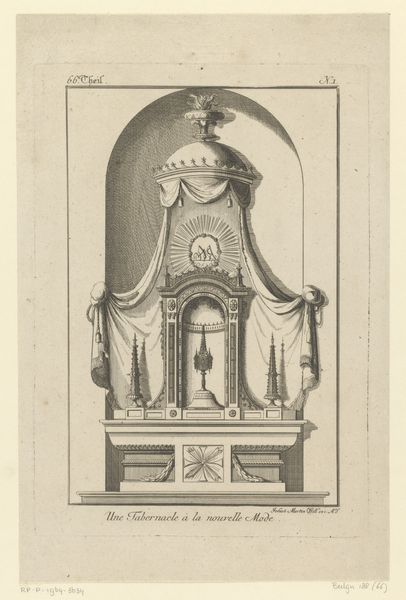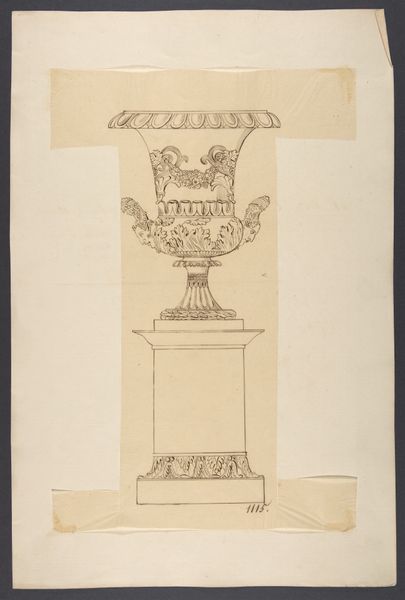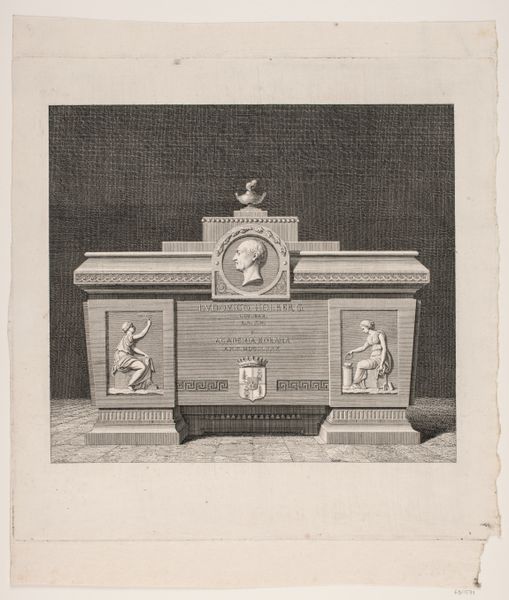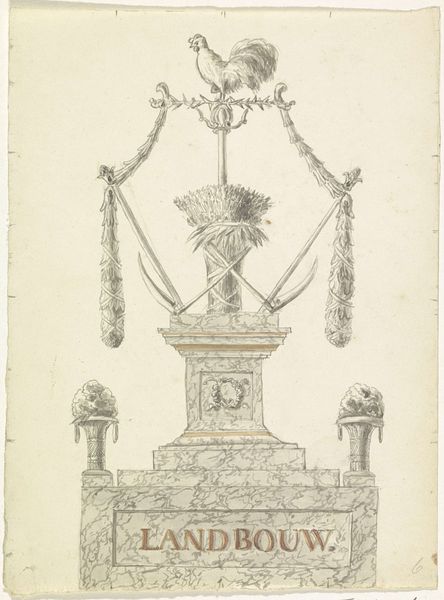
print, engraving, architecture
#
baroque
# print
#
geometric
#
line
#
history-painting
#
trompe-l'oeil
#
engraving
#
architecture
Dimensions: height 151 mm, width 99 mm
Copyright: Rijks Museum: Open Domain
Editor: This print, “Grafmonument met vaas,” or “Grave Monument with Vase,” made in 1758, looks like an engraving of a tomb design. The crisp lines and symmetrical structure give it a neoclassical feel, but something about the ornamentation hints at the Baroque. It feels almost like a stage set. What symbolic meanings might be embedded in this image? Curator: That's a very perceptive observation. The theatrical quality you noted points to the Baroque sensibility. Consider the vase, which is prominent. What does a vase or urn represent in the context of memorial art? Editor: Well, a vase often holds something precious. Perhaps in this context, it's holding the ashes of the deceased, or symbolically holding their memory? Curator: Precisely. It signifies both the vessel and the precious contents, but also transition. Think about the garlands and other draped fabrics. These are carefully rendered to create visual cues: a message about how the viewer should interpret their symbolic role. The draped elements indicate solemnity, remembrance, and a gentle transition. Do you notice anything about their placement? Editor: Yes, they’re carefully placed above and around what I’m assuming is the epitaph. The garland highlights it…almost reverently. Curator: Indeed. And look at how the geometric structure provides order, balance, and timelessness to those ideas, framing that epitaph and adding a touch of idealized permanence. Can you imagine how contemporary audiences might react to such calculated displays of symbolic objects? Editor: It’s all so formal, and feels like it is teaching people how to mourn properly and with purpose. I suppose memory and continuity were really crucial aspects of life in the 18th century. Curator: Exactly! Seeing how those memories get culturally constructed can give us new insights into our own era’s rituals and forms of remembrance, don’t you agree? Editor: Definitely. I’ll never look at grave monuments the same way again.
Comments
No comments
Be the first to comment and join the conversation on the ultimate creative platform.

